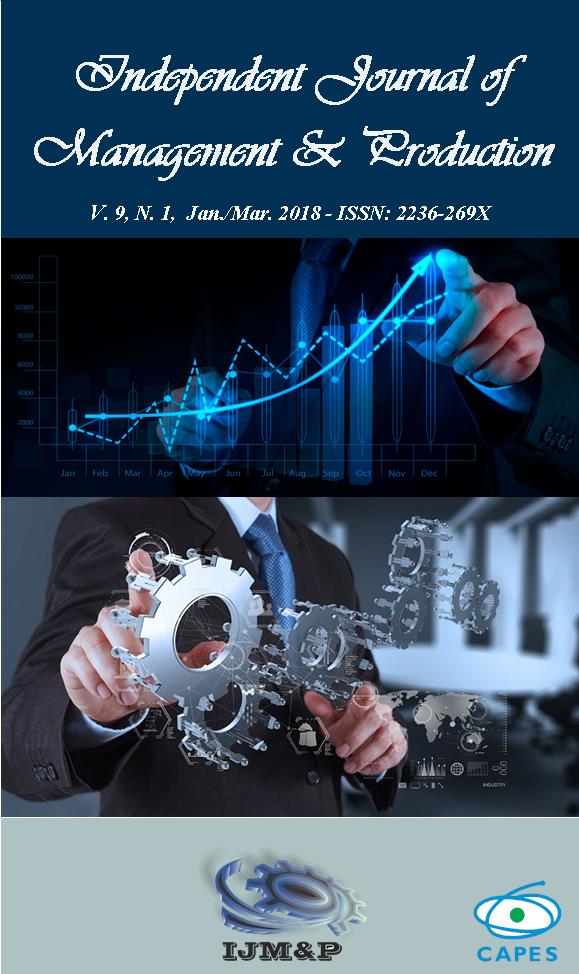Analysis of the catfish (clarias sp.) value chain and its problems in Bogor, Indonesia
Main Article Content
صندلی اداریAbstract
Catfish is one of the leading freshwater commodities stipulated by the Ministry of Marine Affairs and Fisheries (KKP) of the Republic of Indonesia. The annual production target of catfish continues to increase every year. This study aims to analyze the actors and the value chain map of catfish, problems in the value chain of catfish, and the strategies to improve the value chain. This research was conducted by survey method using questionnaire instrument. The survey was done by using purposive sampling technique to 23 catfish farmers, 7 catfish wholesalers, 5 catfish retailers, and 5 catfish processors in Bogor Regency. In this study, there are 4 channels of the value chain of catfish from the production to the consumer. The four actors who are involved in the value chain, namely farmer, wholesaler, retailer, and processor. The constraints along the value chain consist of three aspects: pre-production, production, and post-harvest. Pre-production problems include thequality of seeds, high price of feed, and lack of capital. Problems on production are the weather, fish mortality, and social security. Problems facing post-production cover price instability and lack of bargaining power of farmers. Proposed up-grading strategies to improve the competitiveness are strengthening partnership among farmers, strengthening partnerships between farmers and other strategic partners (traders, and feed companies).
Downloads
Article Details
1. Proposal of Policy for Free Access Periodics
Authors whom publish in this magazine should agree to the following terms:
a. Authors should keep the copyrights and grant to the magazine the right of the first publication, with the work simultaneously permitted under the Creative Commons Attribution-NonCommercial-ShareAlike 4.0 that allows the sharing of the work with recognition of the authorship of the work and initial publication in this magazine.
b. Authors should have authorization for assuming additional contracts separately, for non-exclusive distribution of the version of the work published in this magazine (e.g.: to publish in an institutional repository or as book chapter), with recognition of authorship and initial publication in this magazine.
c. Authors should have permission and should be stimulated to publish and to distribute its work online (e.g.: in institutional repositories or its personal page) to any point before or during the publishing process, since this can generate productive alterations, as well as increasing the impact and the citation of the published work (See The Effect of Free Access).
Proposal of Policy for Periodic that offer Postponed Free Access
Authors whom publish in this magazine should agree to the following terms:
a. Authors should keep the copyrights and grant to the magazine the right of the first publication, with the work simultaneously permitted under the Creative Commons Attribution-NonCommercial-ShareAlike 4.0 [SPECIFY TIME HERE] after the publication, allowing the sharing of the work with recognition of the authorship of the work and initial publication in this magazine.
b. Authors should have authorization for assuming additional contracts separately, for non-exclusive distribution of the version of the work published in this magazine (e.g.: to publish in institutional repository or as book chapter), with recognition of authorship and initial publication in this magazine.
c. Authors should have permission and should be stimulated to publish and to distribute its work online (e.g.: in institutional repositories or its personal page) to any point before or during the publishing process, since this can generate productive alterations, as well as increasing the impact and the citation of the published work (See The Effect of Free Access).
d. They allow some kind of open dissemination. Authors can disseminate their articles in open access, but with specific conditions imposed by the editor that are related to:
Version of the article that can be deposited in the repository:
Pre-print: before being reviewed by pairs.
Post-print: once reviewed by pairs, which can be:
The version of the author that has been accepted for publication.
The editor's version, that is, the article published in the magazine.
At which point the article can be made accessible in an open manner: before it is published in the magazine, immediately afterwards or if a period of seizure is required, which can range from six months to several years.
Where to leave open: on the author's personal web page, only departmental websites, the repository of the institution, the file of the research funding agency, among others.
References
CENTRAL BUREAU OF STATISTICS (2016) Sensus Pertanian 2013. Available: http://www.st.2013.bps.go.id. Access: 25th July, 2016.
DEPARTMENT OF ANIMAL LIVESTOCK AND FISHERIES BOGOR REGENCY (2015) Profil kawasan minapolitan Kabupaten Bogor. Available: http://disnakan.bogorkab.go.id/. Access: 25th July, 2016.
DIRECTORATE GENERAL OF AQUACULTURE. (2015) Rancangan Renstra DJ PB 2015-2019. Jakarta: Direktorat Jenderal Perikanan Budidaya. Kementerian Kelautan dan Perikanan Republik Indonesia.
MWAIJANDE, F. A.; LUGENDO, P. (2015) Fish farming value chain analysis: policy implications for transformations and robust growth in Tanzania. Journal of Rural an Community Development, v. 10, n. 2, p. 47-62.
PORTER, M. (1990) The Competitive Advantage of Nations. New York: The Free Press
RUBEN, R.; VAN BOEKEL, M.; VAN TILBURG, A.; TRIENEKENS, J. (2007) Governance for Quality in Tropical Food Chains. The Netherlands: Wageningen Acadamic Publishers.
SUPRAPTO; SAMTAFSIR, L. S. (2013) Biofloc-165 Rahasia Sukses Teknologi Budidaya Lele. Jakarta: Agro165.
SUPRIATNA, A.; HASCARYO, B.; WISUDO, S. H.; BASKORO, M.; NIKIJULUW, V. P. H. (2014) Model rantai nilai pengembangan perikanan tuna, tongkol, dan cakalang di Indonesia. JPHPI, v. 17, n. 2, p. 144-155
TRIENEKENS, J. H. (2011) Agricultural value chains in developing countries a framework for analysis. International Food and Agribusiness Management Association, v. 14, n. 2, p. 51-81.
IKAN, W. P. (2016) Harga ikan rata-rata di tingkat eceran (Rp/Kg). Available: http://www.wpi.kkp.go.id. Acces: 25th July, 2016.
YUSUF, M.; TRONDSEN, T. (2013) Improving Indonesia’s competitiveness: innovation, value chains and cluster-bases for realising the huge potential of marine ad fisheries. International Journal of Organizational Innovation, v. 6, n. 1, p. 111-118.





